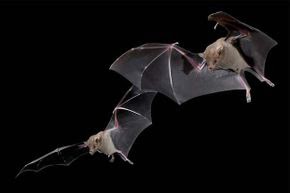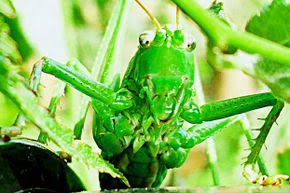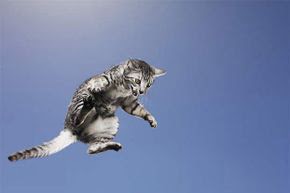Quck answer
There are many common sayings about animals that are actually completely wrong. Here are 10 examples:
1. “Elephants never forget” – while elephants do have impressive memories, they don’t remember everything forever.
2. “Bulls hate the color red” – bulls are actually colorblind and the red cape in bullfighting is only used to enhance the spectacle.
3. “Camels store water in their humps” – camels store fat in their humps, not water.
4. “Ostriches bury their heads in the sand” – ostriches do not bury their heads in the sand, but they do lie low to hide from predators.
5. “Kangaroos only move by hopping” – kangaroos can actually walk and gallop as well.
6. “Bats are blind” – most species of bats can actually see quite well.
7. “Sharks can smell a drop of blood from a mile away” – while sharks do have an incredible sense of smell, they can’t detect a drop of blood from that far away.
8. “Goldfish have a three-second memory” – goldfish can actually remember things for months.
9. “Chameleons change color to blend in with their surroundings” – chameleons change color for a variety of reasons, such as to communicate with other chameleons or to regulate their body temperature.
10. “Dogs only see in black and white” – dogs can actually see some colors, but not as many as humans can.
Animal Facts

Is it really true that cats have nine lives? Let’s take a closer look at some of the sayings we’ve learned about animals over the years. While some idioms, like “a fish out of water,” are true, others are completely false. Here are 10 animal sayings that are completely wrong.
10: Blind as a Bat

Contrary to popular belief, bats are not blind. They actually have good eyesight, but their exceptional echolocation abilities make their sense of sight less important. Bats use sonar to effectively hunt, avoid obstacles, and orient themselves.
9: Cute as a Bug’s Ear

Bugs don’t have ears on their heads like we do. Grasshoppers have ears on their abdomens, katydids have them on their front legs, and lacewings have them on their wings. So, saying someone is “cute as a bug’s ear” is not only false, but also quite odd.
The origin of the saying “cute as a bug” may come from the word “acute,” which means sharp or keen. Bugs have acute hearing and can detect faint and high-pitched sounds. In 18th-century England, “cute” was used to mean “acute.” It’s possible that people back then described insects’ ears or hearing as “cute,” meaning they were good at their job, not adorable.
The saying “eats like a bird” is often used to describe a picky eater or someone who eats small amounts of food. However, birds actually eat a wide variety of insects, nectar, and other foods, frequently throughout the day. Some insect-eating songbirds eat every two seconds! The amount a bird eats depends on its size, with larger birds consuming up to a quarter of their body weight each day and smaller birds up to half. The petite hummingbird famously consumes twice its weight every day.
The saying “happy as a clam” comes from the longer expression “happy as a clam at high tide.” Clams are bivalves with a shell divided into two sections and a strong foot that burrows into sand. People go clamming at low tide when it’s easier to find the buried bivalves. Clams are supposedly happy at high tide when they don’t have to worry about people trying to catch them.
The loon, a water bird that dives for its meals in spacious lakes and takes flight using the water as a runway, is often associated with the saying “crazy as a loon.” However, loons are not crazy but are rather widespread in North America, with the common loon being the most common species.
Common loons are fascinating birds that have striking ebony heads and bodies covered in a black-and-white pattern during summer. Despite their stocky bodies, they can fly at incredible speeds, with migrating loons reaching speeds of up to 70 miles per hour. Their diving and fishing skills are equally impressive, as they can dive without creating a splash and quickly catch their prey while gracefully turning. Common loons are known for their various types of calls, including wails, yodels, and tremolos. The latter two sound like maniacal laughter, while their eerie wail sounds hauntingly insane.
The saying “crying crocodile tears” means that someone is pretending to cry, but there is no sadness behind their tears. Crocodiles shed tears while eating, but there is no emotion behind them. The tears are a physiological response, much like sweating when nervous. Researchers at the University of Florida believe that the tears are caused by air being blown up through the sinuses while the crocodile is eating.
“The bee’s knees” is a phrase that means something is excellent. However, bees do not have knees in the way that humans do. Bees have six sections to their legs, with each segment connecting to the next by a joint. The phrase likely originated in the 1920s as a sign of the times when similarly silly animal expressions such as “the cat’s pajamas” and “the sardine’s whiskers” were popular. The phrase may have also been influenced by the fact that “bees” and “knees” rhyme.
3: Mules are Not Stubborn, They are Smart

Mules are not stubborn animals, they are just intelligent enough to avoid being overworked by their owners.
Tony Arruza/Getty Images
When someone mentions a mule, the image of a person struggling to move the animal forward with a rope while the mule resists, digging its hooves into the ground and refusing to move, comes to mind. However, it is important to note that mules are not the only animals that are perceived to be stubborn. Donkeys are also known for their stubborn personality. But are these animals truly stubborn? To begin with, a mule is not a distinct animal species, unlike horses or donkeys. They are a hybrid, born from the pairing of a male donkey and a female horse. Mules are born with 63 chromosomes, an odd number resulting from the combination of 62 chromosomes from donkeys and 64 from horses, which makes them infertile [source: Lucky Three Ranch].
Donkeys and mules are commonly viewed as stubborn animals, but this is not actually the case. A study conducted by Canterbury Christ Church University and The Donkey Sanctuary in Devon demonstrated that mules are more adaptable when it comes to problem-solving (learning to learn) than horses and dogs. Donkeys came in a close second, with horses and dogs falling behind. So why do people believe that mules and donkeys are stubborn? Because they are incredibly intelligent and have a natural tendency to protect themselves. They will not allow their owners to overwork them, nor will they put themselves in danger. These characteristics have led to the misperception that they are stubborn [source: Canterbury Christ Church University].
2: The Myth of Cats’ Nine Lives

Cats do not actually have nine lives, so it is important to discourage children from throwing them to prove a point.
Mike Powell/Getty Images
It is a widely known fact that cats do not possess nine lives. This myth began, in part, because cats are mysterious creatures that possess otherworldly abilities, such as sneaking around, leaping great heights, and disappearing and reappearing seemingly out of nowhere. However, when people use the phrase “cats have nine lives,” they are usually suggesting that cats can survive things that other animals cannot, such as falling from great heights. While cats are adept at surviving falls, this does not mean that they possess supernatural abilities to survive all kinds of situations. If a cat falls from a low height (such as two or three stories), it will not have enough time to right itself and land on its feet, and it could sustain serious injuries. If a cat falls from the top of a high-rise building, it is likely to be severely injured or killed due to the force of the impact [source: Carlson].
Cats do not just lose their “nine lives” by falling from great heights. Outdoor cats are prone to getting into fights with other cats, being attacked by other animals (such as dogs), or being struck by vehicles, all of which are common causes of death. In fact, one-third of all pet cats in the United States die from cancer [source: Rusk]. Cancer is the most ordinary cause of death for cats, and it is far from a supernatural cause.
1: It’s Never Too Late to Learn

Older individuals, both human and animal, can always acquire new skills and knowledge.
Polafernandez/iStock/Thinkstock
The saying “You can’t teach an old dog new tricks” is often used to imply that older individuals cannot learn anything new. However, this is not entirely accurate for both humans and dogs. Older dogs can learn a variety of commands, skills, and tricks, albeit it may take them a bit longer. Researchers from the University of Veterinary Medicine-Vienna conducted a study involving 145 border collies ranging from 6 months to 14 years old. They assessed how attention and concentration changed with age, by conducting two tests to determine how quickly dogs responded to humans and objects. The older dogs lost interest in the object faster than younger dogs, but if there was a person present, the older dogs were as engaged as the younger ones [source: Science 2.0].
Your aging furry friend may appear to be content with not learning anything new, especially if he has a cozy bed in a sunny spot. However, just as older humans can keep their minds active by doing crossword puzzles and other similar activities, dogs benefit from mental stimulation. So, grab some treats and start teaching your mature dog new tricks.
For More Information
Author’s Note: 10 Animal Sayings That Are Completely Wrong
I am delighted to have discovered that it is possible to teach an old dog new tricks. Now, my 14-year-old English setter, Riley, has no excuses.
Other Relevant Articles
- 10 Common Phrases You’re Probably Saying Incorrectly
- 10 Essential Items for Traveling with Your Pet
- 10 Surprisingly Convincing Falsehoods
- 10 Incorrect Grammar Rules Everyone Believes
- 10 Fascinating Facts About Animals You Didn’t Know
Sources
- Carlson, Cynthia. “Dogs Aren’t Color Blind — And 10 Other Surprising Myths About Pets.” NBC News. 2012. (Oct. 6, 2014) http://www.nbcnews.com/id/40419962/ns/health-pet_health/t/dogs-arent-color-blind-other-surprising-myths-about-pets/#.VDMKPFewTwM
- Canterbury Christ Church University. “Smart Asses! Mules Lead the Way in Intelligent Animal League Table.” May 13, 2013. (Oct. 7, 2014) http://www.canterbury.ac.uk/news/newsRelease.asp?newsPk=2105
- Cornell Lab of Ornithology. “Common Loon.” (Oct. 8, 2014) http://www.allaboutbirds.org/guide/common_loon/id
- Know Your Phrase. “Happy As a Clam.” (Oct. 14, 2014) http://www.knowyourphrase.com/phrase-meanings/happy-as-a-clam.html
- Martin, Gary. “As Cute As a Bug’s Ear.” Phrases. 2014. (Oct. 6, 2014) http://www.phrases.org.uk/meanings/as-cute-as-a-bugs-ear.html
- Martin, Gary. “Crocodile Tears.” Phrases. 2014. (Oct. 6, 2014) http://www.phrases.org.uk/meanings/104800.html
- Martin, Gary. “The Bee’s Knees.” Phrases. 2014. (Oct. 6, 2014) http://www.phrases.org.uk/meanings/the-bees-knees.html
- McCabe, Steve. “Do Bees Have Knees And, If So, What’s So Special About Them?” Focus. July 22, 2009. (Oct. 6, 2014) http://sciencefocus.com/qa/do-bees-have-knees-and-if-so-whats-so-special-about-them
- McConnell, Dr. Carol. “Keep Your Cat Safe: Avoid These 5 Accident-Related Injuries.” Vet Street. March 6, 2014. (Oct. 14, 2014) http://www.vetstreet.com/our-pet-experts/keep-your-cat-safe-avoid-these-5-accident-related-injuries
- Mirsky, Jennifer. “Do You Eat Like a Bird or a Horse? What Does it All Mean?” Real Simple. Aug. 15, 2012. (Oct. 6, 2014) http://simplystated.realsimple.com/2012/08/15/do-you-eat-like-a-bird-or-a-horse-what-does-it-all-mean/
- Rusk, Anthony. “Cancer: Cases Likely Will Increase in Aging Animals.” DVM360 Magazine. March 1, 2005. (Oct. 14, 2014) http://veterinarynews.dvm360.com/cancer-cases-likely-will-rise-aging-animals
- Science 2.0. “How Old Dogs Can Learn New Tricks” April 1, 2014. (Oct. 15, 2014) http://www.science20.com/news_articles/how_old_dogs_can_learn_new_tricks-133131
- Science Daily. “Bat Boffin Debunks ‘Blind’ Myth.” Oct. 31, 2006. (Oct. 6, 2014) http://www.sciencedaily.com/releases/2006/10/061028092920.htm
- Smithsonian Tropical Research Institute. “PNAS: Eating Like a Bird Helps Forests Grow.” April 19, 2010. (Oct. 9, 2014) http://stri.si.edu/english/about_stri/headline_news/news/article.php?id=1126
- Tennessee’s Watchable Wildlife. “Common Loon.” (Oct. 7, 2014) http://www.tnwatchablewildlife.org/details.cfm?displayhabitat=&sort=aounumber&typename=TENNESSEE&uid=09042709472995269&commonname=Common%20Loon
- University of Colorado Boulder. “Listen Up: Crickets Have Had Ears on Their Legs for More Than 50 Million Years.” Jan. 4, 2012. (Oct. 6, 2014) http://www.colorado.edu/news/features/listen-crickets-have-had-ears-their-legs-more-50-million-years-0
- University of Florida. “Crocodile Tears.” Oct. 17, 2007. (Oct. 6, 2014) http://news.ufl.edu/archive/2007/10/crocodile-tears-1.html
- Upper Midwest Environmental Sciences Center. “Loon Study – Frequently Asked Questions.” March 13, 2014. (Oct. 8, 2014) http://www.umesc.usgs.gov/terrestrial/migratory_birds/loons/questions.html
- Wild Birds Unlimited. “Educational Resources: Hummingbirds.” (Oct. 9, 2014) http://www.wbu.com/education/hummingbirds.html
FAQ
1. Do sharks mistake humans for seals?
Contrary to popular belief, sharks do not mistake humans for seals. Most shark attacks on humans are the result of mistaken identity, but not because the shark thinks the person is a seal. In fact, sharks have been known to attack humans who are wearing bright clothing or diving gear, which certainly doesn’t resemble a seal.
2. Do ostriches bury their heads in the sand?
No, ostriches do not bury their heads in the sand. This is a myth that has been perpetuated for centuries, but it is simply not true. Ostriches actually lay their heads on the ground to try and blend in with their surroundings when they feel threatened.
3. Do cats always land on their feet?
While cats are known for their incredible agility and ability to land on their feet, this is not always the case. Cats can and do sometimes fall from great heights and sustain serious injuries, or even death.
4. Do elephants have great memories?
Yes, elephants do have great memories. They are known for their ability to remember other elephants they have met, as well as locations where they have found food and water. However, the idea that elephants have a perfect memory is a myth.
5. Do bulls hate the color red?
No, bulls are not actually attracted to the color red. This is a myth that comes from bullfighting, where the matador waves a red cape to provoke the bull. In reality, bulls are colorblind and are actually attracted to movement and sound.
6. Do all snakes bite?
No, not all snakes bite. While it is true that many species of snakes are venomous and can be dangerous to humans, there are also many species of non-venomous snakes that are harmless and will not bite unless provoked.
7. Is it true that dogs see in black and white?
No, dogs do not see in black and white. While it is true that dogs do not see colors in the same way that humans do, they can still see a range of colors, including blue and yellow.
8. Can camels store water in their humps?
No, camels do not actually store water in their humps. Instead, the humps are used to store fat, which can be used as a source of energy when food and water are scarce.
9. Do bats always carry rabies?
No, not all bats carry rabies. While it is true that some species of bats can carry the disease, the vast majority of bats are disease-free and pose no threat to humans.
10. Can porcupines shoot their quills?
No, porcupines cannot shoot their quills. Instead, the quills are released when the animal is touched or threatened, and they can easily become lodged in the skin of an attacker.





Leave a Reply